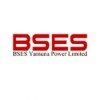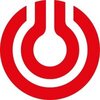Filter interviews by
Shirdi Sai Electricals Senior Engineer Interview Questions, Process, and Tips
Shirdi Sai Electricals Senior Engineer Interview Experiences
2 interviews found

Aptitiude, Reasoning , EEE basic Questions
(4 Questions)
- Q1. Electrical Transformer
- Q2. What is Transformer
- Ans.
A transformer is an electrical device that transfers electrical energy between two or more circuits through electromagnetic induction.
Consists of two coils of wire, known as primary and secondary coils
Primary coil receives electrical energy and creates a magnetic field
Magnetic field induces a voltage in the secondary coil, transferring energy
Used in power distribution, voltage regulation, and electrical isolation
Exampl...
- Q3. What is mutual Induction
- Ans.
Mutual induction is the process where a changing current in one coil induces a voltage in another coil.
Mutual induction occurs when two coils are placed close to each other and the magnetic field produced by one coil induces a voltage in the other coil.
The induced voltage in the second coil is directly proportional to the rate of change of current in the first coil.
This phenomenon is the basis for the operation of tran...
- Q4. What is flux, Current
- Ans.
Flux is the flow of electric or magnetic field lines through a surface, while current is the flow of electric charge.
Flux is a measure of the flow of a physical property through a given area.
In electromagnetism, flux refers to the flow of electric or magnetic field lines through a surface.
Current is the flow of electric charge through a conductor.
Flux and current are related through Faraday's law of electromagnetic ind
(1 Question)
- Q1. Basic questions
Interview Preparation Tips
Skills evaluated in this interview
I applied via Company Website and was interviewed before Jun 2022. There were 3 interview rounds.

(3 Questions)
- Q1. Describe about the DTR. What are the material used in constrction of DTR Structure
- Ans.
DTR stands for Dead Time Recovery. It is a structure used in the oil and gas industry to separate gas and liquid phases.
DTR is typically made of steel or other corrosion-resistant materials.
The structure is designed to handle high pressure and temperature conditions.
Common materials used in the construction of DTR include carbon steel, stainless steel, and duplex stainless steel.
The choice of material depends on factor...
- Q2. Descibe about Bucoz relay & Its function.
- Ans.
A Bucoz relay is a type of protective relay used in power systems to detect faults and isolate them to prevent damage.
Bucoz relay is a type of protective relay used in power systems.
It functions by detecting faults in the system and isolating them to prevent damage.
It helps in maintaining the stability and reliability of the power system.
Bucoz relay operates based on the principle of electromagnetic induction.
Examples ...
- Q3. Describe about Pipe earthing of DTR
- Ans.
Pipe earthing of DTR involves using a metal pipe buried in the ground to provide a low-resistance path for fault currents.
Metal pipe is buried vertically in the ground near the DTR
The pipe is filled with alternate layers of charcoal and salt to improve conductivity
A copper wire is connected to the pipe and then to the DTR for grounding purposes
(2 Questions)
- Q1. What are your salary requirements.
- Q2. Why you want join my organization
Interview Preparation Tips
Top trending discussions






Interview questions from similar companies

Interview Questionnaire
2 Questions
- Q1. Relocate to any location in India
- Q2. Basic techanical question and prefer experience of wind sector
Interview Preparation Tips

Interview Questionnaire
1 Question
- Q1. Course-related questions
Interview Preparation Tips
Experience: 1. Topics: Reasoning and Technical (AE & ME).
Open for Programme/Departments: All dual degree students
Number of Students selected: 1
Duration: 30 minutes
General Tips: Prepare for courses offered by department.
College Name: IIT KANPUR

I applied via Walk-in and was interviewed before Nov 2019. There were 3 interview rounds.
Interview Questionnaire
2 Questions
- Q1. Overhauling procedure of turbine and generator
- Ans.
Overhauling procedure of turbine and generator involves disassembly, inspection, repair, and reassembly.
Disassemble turbine and generator components
Inspect components for wear and damage
Repair or replace damaged components
Reassemble components and test for proper function
- Q2. About roll check bump check and alignment etc
Interview Preparation Tips

Interview Questionnaire
4 Questions
- Q1. What is 7qc tool, why we use it ?
- Ans.
7QC tools are a set of quality control tools used to identify and solve quality problems in manufacturing processes.
7QC tools include Pareto chart, cause-and-effect diagram, control chart, histogram, scatter diagram, flowchart, and check sheet.
They help in identifying and analyzing quality problems, determining root causes, and implementing corrective actions.
They are used to improve product quality, reduce defects, an...
- Q2. What ia PPAP and APQP?
- Ans.
PPAP and APQP are quality management systems used in manufacturing.
PPAP stands for Production Part Approval Process and is used to ensure that manufactured parts meet customer requirements.
APQP stands for Advanced Product Quality Planning and is used to plan and manage the design and development of new products.
Both systems are commonly used in the automotive industry but can be applied to other manufacturing industrie...
- Q3. What is pareto?
- Ans.
Pareto is a principle that states 80% of effects come from 20% of causes.
Also known as the 80/20 rule
Used in business to identify the most important factors
Can be applied to various fields such as economics, engineering, and social sciences
Example: 80% of a company's profits come from 20% of its customers
- Q4. How to calculate the OEE?
- Ans.
OEE can be calculated by multiplying Availability, Performance, and Quality percentages.
Calculate Availability by dividing Operating Time by Planned Production Time.
Calculate Performance by dividing Actual Production by Maximum Production.
Calculate Quality by dividing Good Units by Total Units Produced.
Multiply Availability, Performance, and Quality percentages to get OEE.

I applied via Referral and was interviewed in Nov 2020. There were 3 interview rounds.
Interview Questionnaire
1 Question
- Q1. Current jd
Interview Preparation Tips

Junior Engineer Interview Questions & Answers
SAEL Industries Limitedposted on 8 Nov 2021
Interview Preparation Tips

I applied via Naukri.com and was interviewed before Dec 2020. There was 1 interview round.
Interview Questionnaire
2 Questions
- Q1. What is the value of 1/infunity
- Ans.
The value of 1/infinity is 0.
The value of 1/infinity is considered to be zero.
In mathematics, infinity is not a number but a concept representing an unbounded quantity.
When we divide any finite number by infinity, the result tends to zero.
For example, 1/∞ = 0, 10/∞ = 0, -5/∞ = 0.
- Q2. What is the properties of glass
- Ans.
Glass is a solid material that is transparent, brittle, and has no definite shape or volume.
Glass is made by melting silica, soda ash, and lime together at high temperatures.
It is a good insulator and can be used for windows, lenses, and mirrors.
Glass can be colored or clear, and can be shaped into various forms.
It is fragile and can break easily, but can also be tempered to increase its strength.
Glass is non-porous an...
Interview Preparation Tips

I applied via Naukri.com and was interviewed before May 2023. There were 3 interview rounds.
(12 Questions)
- Q1. What are the lifecycle methods?
- Ans.
Lifecycle methods are methods that are automatically called at certain points in the lifecycle of a component in React.
Lifecycle methods include componentDidMount, componentDidUpdate, componentWillUnmount, etc.
These methods allow developers to perform actions at specific points in a component's lifecycle, such as fetching data after the component has been rendered.
They are used to manage side effects, perform cleanup, ...
- Q2. What are the advantages and features of react?
- Ans.
React is a popular JavaScript library for building user interfaces.
Component-based architecture for reusability and easy maintenance
Virtual DOM for efficient updates and performance optimization
JSX syntax for writing HTML within JavaScript
One-way data binding for predictable data flow
Support for server-side rendering for improved SEO
Large community and ecosystem with many third-party libraries and tools
- Q3. Difference between class and functional components?
- Ans.
Class components are ES6 classes that extend from React.Component and have state and lifecycle methods, while functional components are simple functions that take props as input and return JSX.
Class components are defined using ES6 classes and have a render method.
Functional components are defined as simple functions that take props as input and return JSX.
Class components can have state and lifecycle methods like comp...
- Q4. What are the Higher order components?
- Ans.
Higher order components are functions that take a component and return a new component with additional functionality.
Higher order components enhance the functionality of existing components
They can be used for code reusability and separation of concerns
Examples include withRouter from React Router and connect from React Redux
- Q5. What are the React hooks?
- Ans.
React hooks are functions that let you use state and other React features without writing a class.
React hooks were introduced in React 16.8.
They allow you to use state and other React features in functional components.
Some commonly used hooks are useState, useEffect, useContext, and useReducer.
Hooks are more flexible and easier to use compared to class components.
- Q6. What is the difference between contextAPI and Redux?
- Ans.
ContextAPI is a built-in feature in React for managing global state, while Redux is a separate library for state management in React applications.
ContextAPI is built into React, while Redux is a separate library.
ContextAPI is primarily used for managing global state in a React application.
Redux provides a centralized store for state management and follows a unidirectional data flow.
ContextAPI is simpler to use for smal...
- Q7. What are the semantic elements in html?
- Ans.
Semantic elements in HTML are tags that clearly define the content they wrap, providing meaning to both browsers and developers.
Semantic elements help improve SEO by providing search engines with better understanding of the content.
Examples of semantic elements include <header>, <footer>, <article>, <section>, <nav>, <aside>, <main>, <figure>, <figcaption>, <deta...
- Q8. What are the pseudo elements?
- Ans.
Pseudo elements are used in CSS to style specific parts of an element.
Pseudo elements are denoted by double colons (::) in CSS.
They allow styling of specific parts of an element, like the first letter or line.
Common pseudo elements include ::before, ::after, ::first-line, and ::first-letter.
- Q9. What is box model?
- Ans.
The box model is a fundamental concept in CSS that defines the layout of elements on a webpage.
The box model consists of content, padding, border, and margin.
Content: the actual content of the element, such as text or images.
Padding: space between the content and the border.
Border: a line that goes around the padding and content.
Margin: space outside the border, separating the element from other elements.
- Q10. What is hoisting?
- Ans.
Hoisting is a JavaScript mechanism where variable and function declarations are moved to the top of their containing scope during the compilation phase.
Variable and function declarations are hoisted to the top of their scope.
Only declarations are hoisted, not initializations.
Function declarations take precedence over variable declarations.
Example: console.log(myVar); var myVar = 10; // Output: undefined
Example: cons...
- Q11. What is difference between normal function and arrow function?
- Ans.
Normal functions are defined using the function keyword, while arrow functions are defined using the => syntax.
Normal functions are hoisted, while arrow functions are not hoisted.
Arrow functions do not have their own 'this' keyword, they inherit it from the parent scope.
Arrow functions do not have their own 'arguments' object.
Arrow functions are more concise and have implicit return.
Arrow functions cannot be used as co
- Q12. What is splice and slice?
- Ans.
Splice and slice are methods used in programming to manipulate arrays.
Splice is used to add or remove elements from an array at a specific index.
Slice is used to extract a portion of an array and returns a new array.
Example of splice: array.splice(2, 0, 'new element') - adds 'new element' at index 2.
Example of slice: array.slice(1, 4) - extracts elements from index 1 to 3.
Coding questions on Java script like array methods and objects handling. coding questions on React is like life cycle methods using functional components and state management.
(2 Questions)
- Q1. Why should we hire you?
- Q2. How do you handle the work?
Skills evaluated in this interview
Shirdi Sai Electricals Interview FAQs
Tell us how to improve this page.
Shirdi Sai Electricals Interviews By Designations
- Shirdi Sai Electricals Senior Engineer Interview Questions
- Shirdi Sai Electricals Planning Engineer Interview Questions
- Shirdi Sai Electricals Electrical GET Interview Questions
- Shirdi Sai Electricals Maintenance Engineer Interview Questions
- Shirdi Sai Electricals R&D Manager Interview Questions
- Shirdi Sai Electricals Graduate Engineer Trainee (Get) Interview Questions
- Shirdi Sai Electricals Production Engineer Interview Questions
- Shirdi Sai Electricals Store Officer Interview Questions
- Show more
Shirdi Sai Electricals Senior Engineer Interview Process
based on 2 interviews
Interview experience
Interview Questions from Similar Companies
Fast track your campus placements
Shirdi Sai Electricals Senior Engineer Reviews and Ratings
based on 6 reviews
Rating in categories
|
Senior Engineer
31
salaries
| ₹3.4 L/yr - ₹8.4 L/yr |
|
Production Engineer
23
salaries
| ₹1.8 L/yr - ₹5 L/yr |
|
Electrical Engineer
20
salaries
| ₹1.8 L/yr - ₹4.8 L/yr |
|
Engineer
15
salaries
| ₹1.8 L/yr - ₹5 L/yr |
|
Quality Engineer
13
salaries
| ₹2.9 L/yr - ₹4 L/yr |

Dhoot Transmission

Doosan Power Systems

Inox Wind

Bses Yamuna Power
- Home >
- Interviews >
- Shirdi Sai Electricals Interview Questions >
- Shirdi Sai Electricals Senior Engineer Interview Questions













